A Ming Iron Head of Guanyin
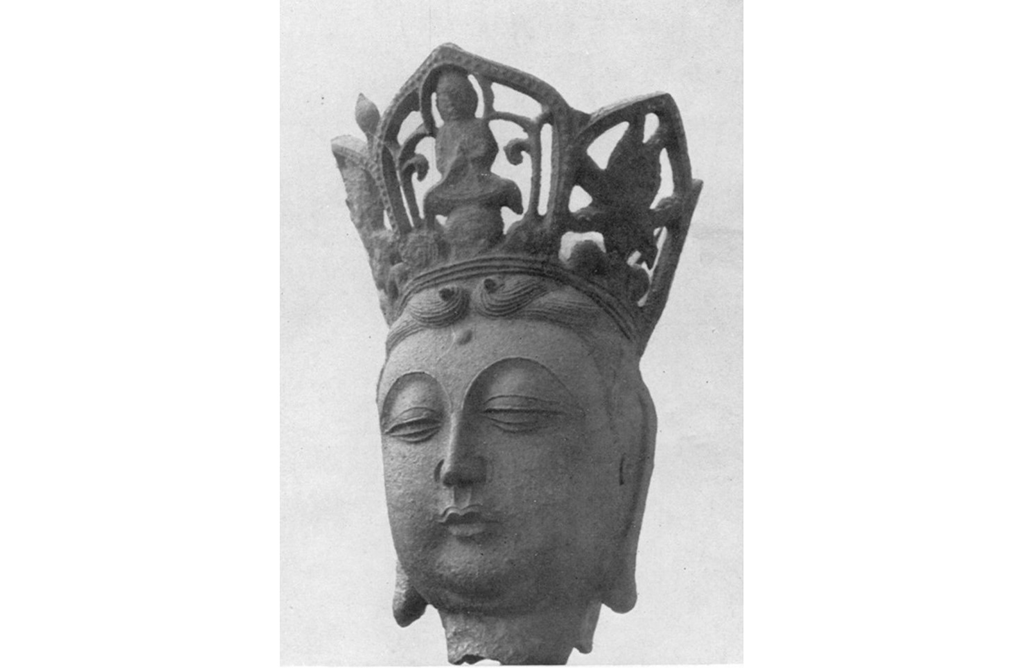
Masterpieces of Oriental Art. 5, The Journal of the Royal Asiatic Society of Great Britain and Ireland, 1945
A Ming dynasty iron head of the Buddhist bodhisattva Guanyin was part of a collection of artefacts from Asia owned by Dora Gordine that were sold at auction in 1994. Here volunteer Nadia Stern takes this sculpture as a starting point for a wider interrogation of Gordine’s position in relation to understandings of and debates about the ‘Exotic’.
Dora Gordine (1895–1991) used the above photograph to illustrate one of a series of lectures she delivered during the 1940s entitled Masterpieces of Oriental Art to members of the Royal Asiatic Society of Great Britain and Ireland (later published as a series of papers in the Society’s journal). She described the head as ‘a masterpiece of technique’ and drew attention to the sculptor’s decision to sacrifice a detailed rendition of the headdress in order to focus the viewer’s gaze on the ‘pencilled delicacy’ of the face.[1] Dating from the Ming period (1368–1644 CE), the head was once part of an extensive collection of Asian artefacts at Dorich House that was sold at auction in the mid-1990s to help fund the building’s renovation.[2] It depicts Guanyin, a Buddhist bodhisattva, or one who has attained bodhicitta and dedicates themselves to helping others attain enlightenment. The headdress features the buddha Āmítuófó (also known as Amitābha), flanked by sacred lotus flowers, from whom it is said Guanyin came as a ray of light, and who was Guanyin’s spiritual teacher before she became a bodhisattva. The Urna in the centre of Guanyin’s forehead is an auspicious mark and symbolises a mystical third eye. Guanyin, which means ‘she who listens to the sound’, originated in India as a male deity called Avalokiteśvara, the bodhisattva of compassion. After the introduction of Buddhism to China, he was transformed into a female bodhisattva, with compassion and kindness being more associated in Chinese culture with motherly virtues. Guanyin has always been a favourite bodhisattva for Chinese Buddhists and came to be incorporated into Chinese religious life, art and material culture as an important figure in the Buddhist pantheon.[3]
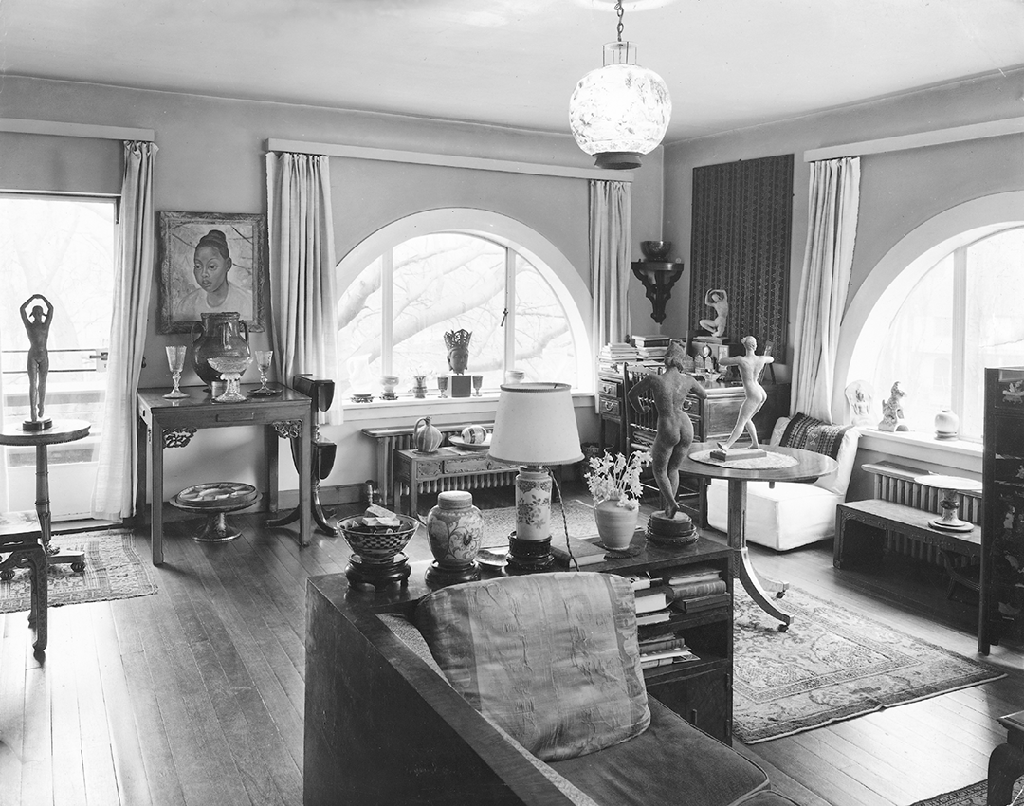
Whilst statues of Guanyin come in many materials and forms, they are never depicted solely as heads. At some point during this sculpture’s long history, the head was separated from its body. We know nothing of its provenance or how it came into Gordine’s possession, but when this photograph was used to illustrate a paper written by her in 1945, it was described as part of a private collection. It is likely Gordine was the owner at the time, perhaps having acquired it during the 1930s whilst living and working in Johore and Singapore and touring the region visiting important cultural sites. She certainly owned it in the late 1940s when it can be seen in a photograph at Dorich House on a windowsill (see above). Either way, the story of the sculpture’s journey from ancient China to English suburbia would be a fascinating one, if only it could be told.
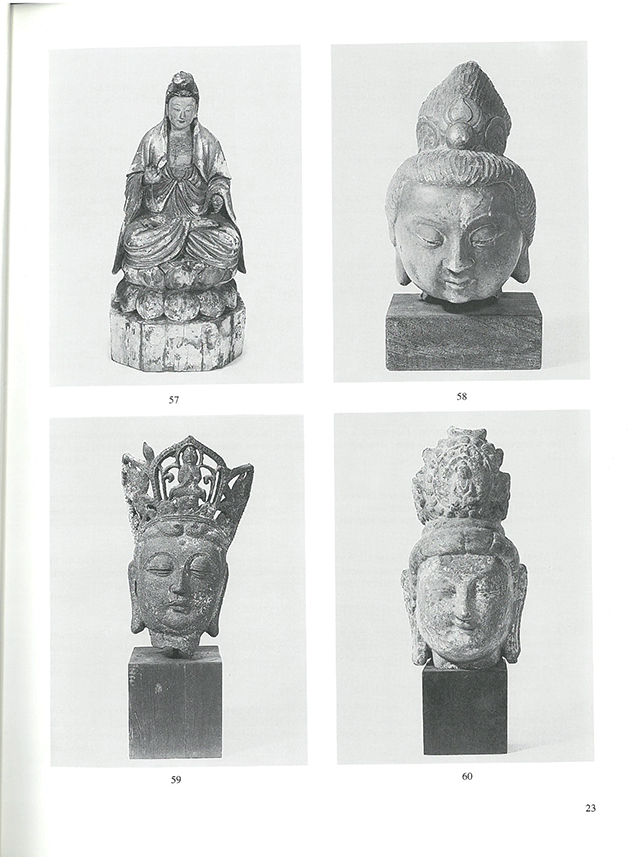
The large number of objects from Asia that were sold at auction from Dorich House reflect Gordine’s long-standing passion for Asian art, and included other sculptures of Guanyin, including two in stone and one in wood.[4] Throughout the Royal Asiatic Society lecture series, she provided careful visual analyses of works from across Asia, informed by her own practice as an artist. This knowledge and deeply felt admiration provided a rich resource for Gordine’s own work and there are many examples of her portrait heads and full-length figures that are indebted to Asian cultures. I believe this aspect of her work helps to account for both the rapid rise in her reputation as an artist, and its subsequent decline.
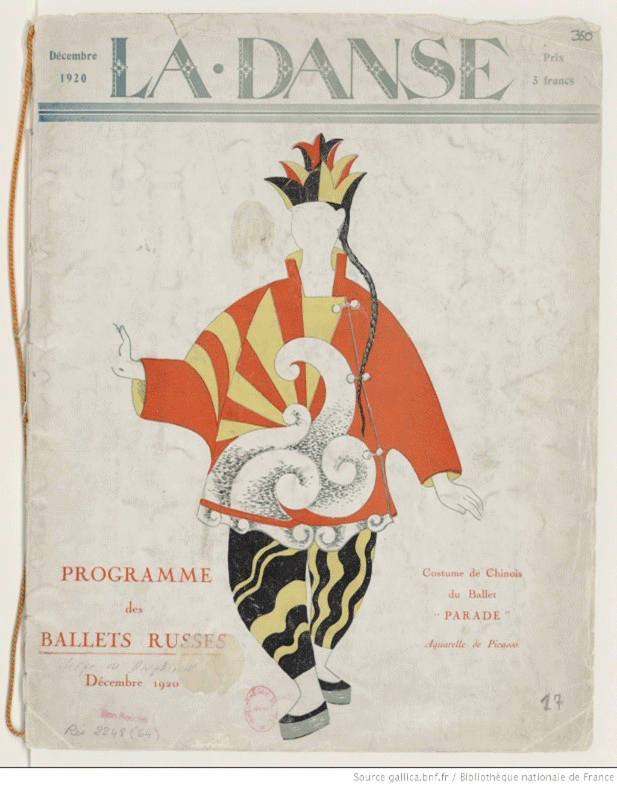
The ‘exotic’ – that is the ‘far-away’ (in terms of time and/or space) and the unfamiliar – as a source of inspiration for western artists was well established in Paris by the time Gordine travelled there from Tallinn in the early 1920s as an emerging artist seeking to further her training and career. Pablo Picasso (1881–1973) and others famously ‘discovered’ African art during the first decade of the twentieth century and collected tribal artefacts, references to which were subsequently incorporated into their work. Aristide Maillol (1861–1944), who was then regarded as one of the greatest living sculptors, and with whom Gordine sought to align herself, studied sculpture from Cambodia, China and India in the Musée national des arts asiatiques-Guimet, a practice Gordine then followed. Josephine Baker (1906–1975) captivated audiences with her Dances Sauvage as part of the fashion for négrophilie, whilst the designs for Les Ballets Russes by artists, including Picasso, provided a spectacle of Asian-inspired exotica.
The East – or, rather, western popular ideas about the East – provided inspiration for designers who participated in the Exposition internationale des arts décoratifs et industriels modernes, held in Paris during 1925. Whilst there may not have been a recognisably coherent style, it was the ‘exotic’ that provided the Exposition’s distinctive flavour. Inspiration was drawn from many corners of the earth, but especially from Africa and Asia.[5] Western interest in ‘far-away’ places was heightened by archaeological discoveries, such as that of Tutankhamun’s tomb in 1922, and improved maritime transport made long-distance travel a possibility for more people.
This was the backdrop against which Gordine’s sculpted heads of people of Asian origin were made, some of which were first exhibited in Paris and other countries and then acquired by influential collectors such as Samuel Courtauld, George Eumorphopoulos, Josef von Sternberg, Suzanne Stoclet and Henri-Auguste Widmer.[6]
Gordine’s head of Chia-Chu Chang (1902–1985) (see below) was modelled from life in 1925 and was exhibited to great acclaim at the Salon des Tuileries in Paris in 1926 and then in Edinburgh, Berlin and Paris.[7] The Paris exhibition effectively launched Gordine’s career and helped secure her reputation as a leading artist whose work was closely associated with non-European subjects and art forms.
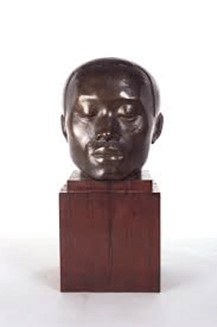
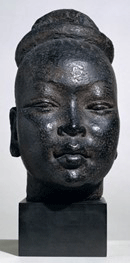
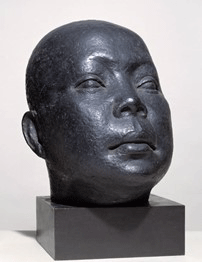
There was, of course, a much darker side to Parisian society’s fascination with the exotic. Relations with overseas territories were an important feature of France’s identity and outlook on the world. Prior to its break-up after the Second World War, the French colonial empire held exploitative and brutal dominion over 68 million people in Africa, Cambodia, Lebanon, the South Pacific, Syria and Vietnam. The size of its territory was second only to that of the British empire.[8] The public’s engagement with France’s extensive colonies was encouraged for economic reasons as well as providing justification for the country’s mission civilisatrice. There is no doubt that Gordine benefitted from European dominion over Asian colonies whilst resident in British Malaya. She was able to quickly establish connections with the highest levels of Singapore society and gained British citizenship through marriage to Dr Garlick, Deputy Medical Officer of the Johore Medical Service. These connections provided valuable commissions and probably eased the path for her extensive travel throughout the region.
Gordine’s reputation as an artist of international standing was further enhanced by the purchase and installation of five bronze heads and a cast of Torso/Walking Male Torso in the Municipal Building in Singapore in 1931–35.[9] Four of the five heads were chosen to represent members of the Chinese, Indian, Javanese and Malayan communities who lived and worked in Singapore. Two of these heads form part of the Tate Gallery’s sculpture collection.
Widely admired at the time, these heads, and similar works by Gordine, are now subject to criticism for representing racist, colonial beliefs and attitudes, prevalent at the time.[10] The portrayal of non-Europeans by western artists forms an important part of art-historical and wider social discourse and, more generally, the role of so-called ‘primitivism’ in the development of European modernism has been the subject of milestone exhibitions and much commentary.[11] The current argument about cultural appropriation is the latest form this discussion takes.
All these debates recognise the unequal power relations that exist between the ‘insider’ and the ‘outsider’, whether that be, for example, between the coloniser and the colonised, men and women, or white people and Black people. On the face of it, it seems that much of Gordine’s work falls on the wrong side of these debates. In terms of subject matter and style, her indebtedness to ancient Asian cultures is obvious. Moreover, labelling a bust as representing all the peoples of a particular country, rather than by the name of the portrait’s sitter, is troubling. Whilst acknowledging these concerns about some of Gordine’s work, I think that as a woman and a Jew from a country that includes both European and Asian cultures, Gordine’s status in relation to ‘otherness’ is more ambiguous and creates the possibility of a different narrative concerning her relationship to Asian cultures. To this day, the under-representation of women artists in museums and galleries is widely acknowledged and there is a continuing gap in the literature on women sculptors.[12] Antisemitism was rife throughout the twentieth century and being born of Jewish heritage carried the threat of certain death in some European countries during the 1930s and 1940s.
Gordine’s first known sculpture, made in 1920–21, of unknown whereabouts, was a portrait of Aleksei Baiov (1899–1923), a Russian poet and orientalist, and it is possible that this acquaintanceship stimulated her interest in Asia. In any case, the Russian imperial empire, and its successor, the USSR – of which Gordine’s birthplace in Latvia and her subsequent home in Estonia formed a part – encompassed many different cultures, languages and religions, Islam and Buddhism among them. Straddling Europe and Asia, Russia and the USSR belonged to both and to neither. The relationship between the disparate parts to the whole was the subject of urgent debate, both before and after the 1917 October Revolution. Furthermore, Russian/Soviet artists were fascinated with Eastern religions and cultures.[13]
In many ways, Gordine was a pioneer in terms of what she believed in and achieved. Her views did not seem to be based on any assumptions about the relative superiority of European culture, and she repeatedly and publicly argued the opposite case, as her lectures and other writings testify. Neither did she share the explicitly racist attitudes towards people of Asian origin held by many at the time and was friends with many people of Asian origin. Contemporary reviews often commented on the stark contrast Gordine’s sculptures provided to other, derogatory portrayals of Asian people. The people she portrayed, on the other hand, were judged to be deserving of respect.[14]
According to the sculptor Anthony Caro (1924–2013), Gordine, along with Jacob Epstein (1880–1959), ‘cracked the mould’ by turning away from the influence of Ancient Greece and Rome towards other models and sources of inspiration.[15] This echoed Gordine’s belief that artists had more to learn from India and China than from Greece and Rome and that lovers of art and beauty would do well to refocus their attention from the familiar towards Asiatic sculpture.[16] These views are as valid today as they were when first expressed by Gordine some 80 years ago.
Nadia Stern
Published as part of the project The Squatter Years: Recovering Dorich House Museum’s Recent Past, funded by the National Lottery Heritage Fund, January 2021.
[1] Dora Gordine, ‘Masterpieces of Oriental Art. 5’, Journal of the Royal Asiatic Society of Great Britain and Ireland, 2 (October 1945), p.113.
[2] The head was sold by Phillips at an auction of Chinese & Japanese Ceramics, Snuff Bottles & Works of Art on 8 December 1994 as lot 59 for £1,500, which is roughly equivalent to £2,500 today. The estimated sale price was £250–£350.
[3] Information about Guanyin has largely been drawn from the Ashmolean Museum, Metropolitan Museum of Art and Victoria and Albert Museum websites. Many museums have sculptures and images of Guanyin from all epochs. See: https://collections.ashmolean.org/collection/search/per_page/100/offset/0/sort_by/relevance/object/27325; https://www.metmuseum.org/art/collection/search/61509; and http://collections.vam.ac.uk/item/O181933/guanyin-figure-of-guanyin-unknown/.
[4] These were sold alongside the iron head: A gilt and painted wooden Figure of Guanyin (lot 57); A grey stone Head of Guanyin (lot 58); and A stone Head of Guanyin (lot 60), Chinese & Japanese Ceramics, Snuff Bottles & Works of Art, Phillips, London, 8 December 1994.
[5] Ghislaine Wood, Art Deco, (Melbourne: National Gallery of Victoria, 2008), pp. 26–29, 94–97; Ghislaine Wood, Essential Art Deco (London: V&A Publications, 2003), pp. 6, 41, 49.
[6] Jonathan Black, ‘Collecting Connoisseurs and Building to House a Collection: The Intriguing Case of Dora Gordine (1895–1991)’, Journal of the History of Collections, 21.2 (2009), 253–61, https://doi.org/10.1093/jhc/fhp026.
[7] Jonathan Black and Brenda Martin, eds, Dora Gordine: Sculptor, Artist, Designer (London: Philip Wilson Publishers, 2007), p.238.
[8] H.R. Tate, ‘The French Colonial Empire’, Journal of the Royal African Society, 39.157 (October 1940), 322–23.
[9] Jonathan Black provides background on and details of the Singapore municipal commissions’ purchase of Gordine’s work in: ‘Orientalism and “Exotic” Sculpture in an Imperial Age’, in Dora Gordine: Sculptor, Artist, Designer, ed. by Jonathan Black and Brenda Martin (London: Philip Wilson, 2007), pp.114–20.
[10] ‘Dora Gordine, Mongolian Head 1928’, Gallery label, Tate, September 2004, https://www.tate.org.uk/art/artworks/gordine-mongolian-head-n04419.
[11] For example, ‘Primitivism’ in 20th Century Art: Affinity of the Tribal and the Modern, Museum of Modern Art, New York, 27 September 1984 – 15 January 1985 and Magiciens de la Terre, Centre Georges Pompidou and Grande halle de la Villette, Paris, 18 May–14 August 1989.
[12] Ann Compton, ‘Dora Gordine: Sculptor, Artist, Designer by Jonathan Black and Brenda Martin’, The Art Book, 16.1 (February 2009), 48.
[13] Vera Tolz, Russia’s Own Orient: The Politics of Identity and Oriental Studies in the Late Imperial and Early Soviet Periods (Oxford: Oxford University Press, 2011), p.3.
[14] Jonathan Black, ‘“An Unsettling Aura of Inscrutability”: Imperialism, Racial Stereotyping and the Construction of the “Exotic” by British Women Sculptors during the 1920s and 1930s’, in Women’s Contributions to Visual Culture, 1918–1939, ed. by Karen E. Brown (Aldershot: Ashgate Publishing, 1988), pp.57–73.
[15] Anthony Caro, ‘Introduction’, in Embracing the Exotic: Jacob Epstein and Dora Gordine, ed. by Sarah MacDougall and Rachel Dickson (London: Papadakis, 2006), p.17.
[16] Dora Gordine, ‘The Beauty of Indian Sculpture’, Journal of the Royal Asiatic Society of Great Britain and Ireland, 1 (January 1941), 42–55.

